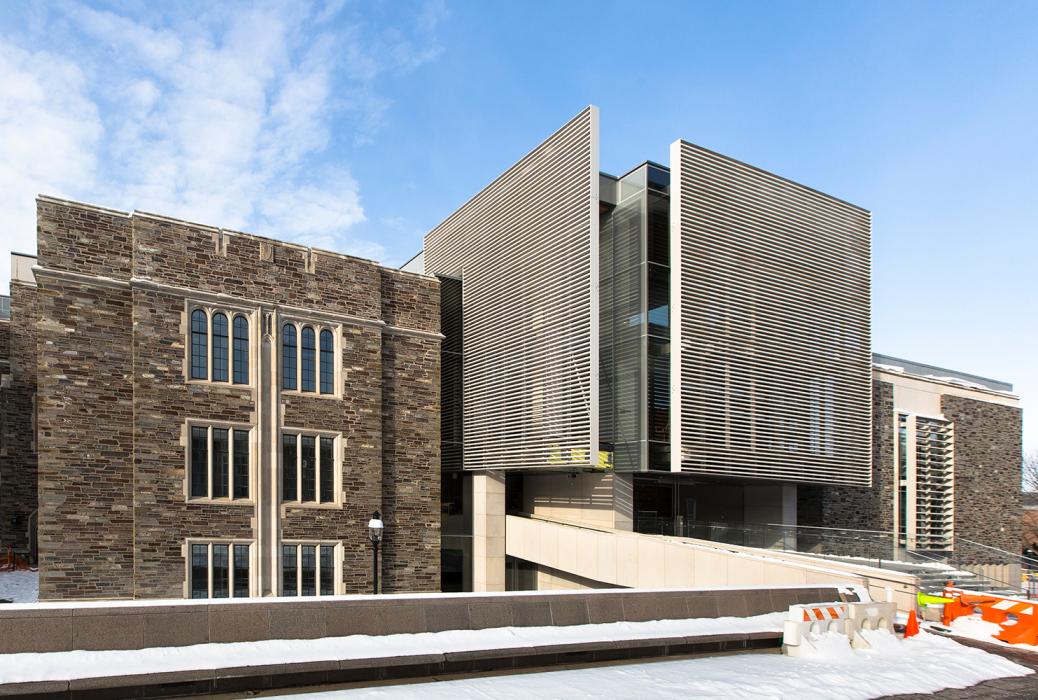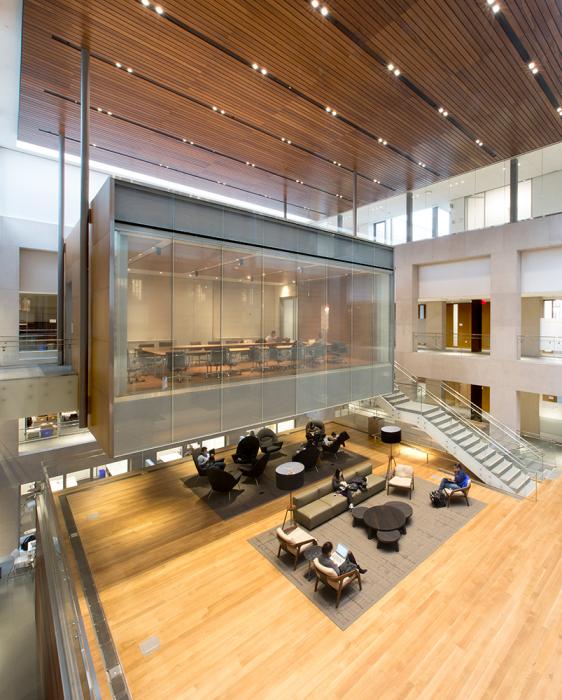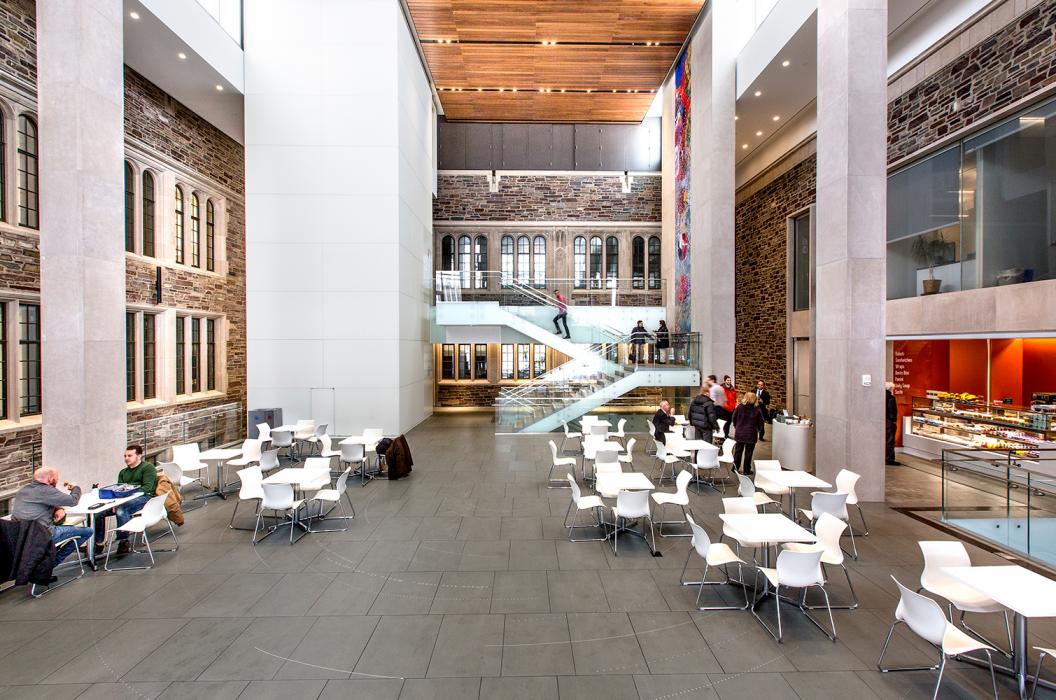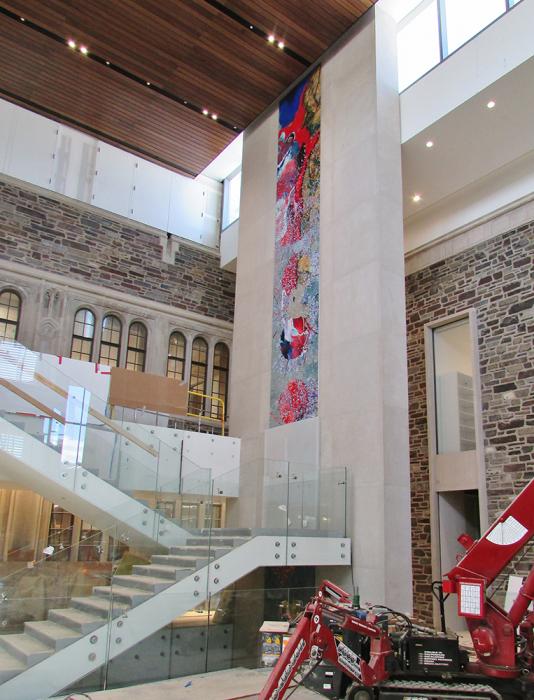Princeton University, JRR Building
This renovation and historic preservation at Princeton University focused on providing light-filled, accessible environments while preserving the heritage of the exterior and interior spaces.
Overview
The renovation of Princeton University's Julis Romo Rabinowitz Building and Louis A. Simpson International Building modernized and expanded the original Frick Chemistry Laboratory, constructed in 1929, to serve the Department of Economics and the Institute for International and Regional Studies. The architect’s vision for the new facility focused on providing light-filled, accessible environments while preserving the heritage of the exterior and interior spaces.
We provided façade investigation, historic preservation and structural design services to KPMB Architects for the renovation and expansion, which was completed in 2016.
Highlights
- Our façade work included a condition assessment and analysis of the original steel casement windows and repairs for the exterior stone retrofitting of the steel windows and to portions of the roof.
- Historic preservation services include façade restoration and coordination with retrofitting of new doors and steel replacement windows, including new limestone surrounds. Modifications incorporated sustainable design strategies that respect the façade’s historic character.
- The structural work included the addition of three glazed rooftop pavilions and a new classroom that hangs from the pavilion structure, known as “the forum.” In order to accommodate the increased live load from the pavilion, the original building roof was locally reinforced with additional steel framing. To create an open space for the forum near the middle of the building, three stories of the existing structure were removed. The interior of the building underwent extensive renovations to install new staircases, glass windows and a cafe.
- A new 60-foot-tall, steel-framed atrium encloses the space between the 1929 and 1964 buildings, with an entrance that leads to Scudder Plaza. The new atrium’s basement is constructed 10 to 15 feet lower than the 1929 building foundations, which required major underpinning.





